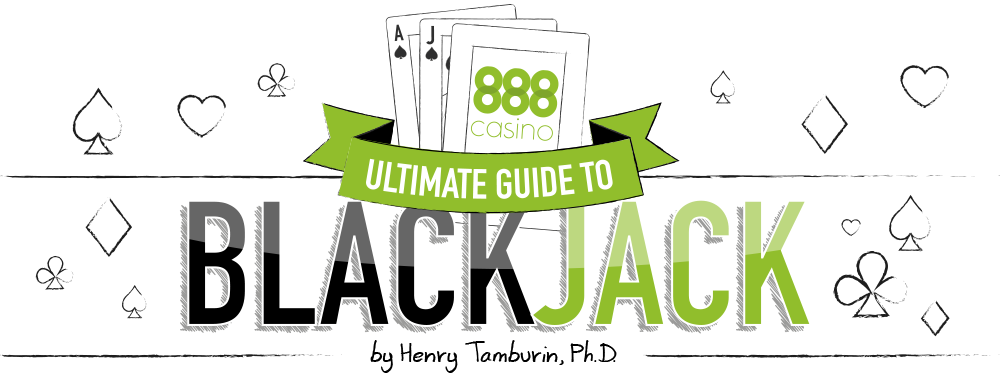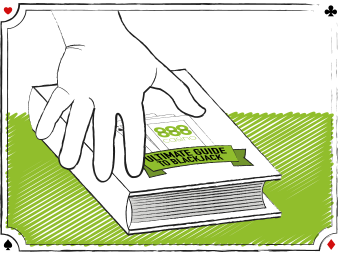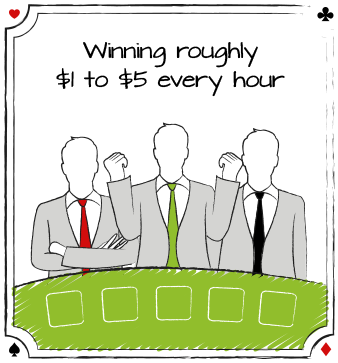
THE PROCESS OF WINNING AT BLACKJACK

CONGRATULATIONS
on having made it all the way through the Ultimate Guide to Blackjack! I hope that you have enjoyed your journey and that you are well on your way to becoming a skillful blackjack player.As you acquired those new skills, you passed from the beginning stages of a novice player all the way through to the final stages of a knowledgeable practitioner. I have summarized those stages, below, along with the chapter references to the various skills you acquired.
I wish you continued success in your blackjack endeavors!
Henry Tamburin
Henry Tamburin

STAGE 1

There are two types of players at this stage. The majority is novices that are new to the game, and the rest are experienced players who always depend on luck when they play. Players in this stage know only the rules of blackjack (Chapter 1) and nothing about the basic playing strategy (Chapter 2 and 3).
They use intuition when it comes to playing their hands. In addition, some experienced players, who might know something about basic strategy but insist on playing bad blackjack games (e.g., blackjacks paid at only 6-5, or worse, even money), fall into this category. Stage 1 players face a house advantage between 1.5% to 2.0%. This means they can expect to lose roughly $15 to $20 every hour they play blackjack.
(For simplicity, I assumed a $10 bettor playing 100 hands per hour. If you bet more, you’ll lose more; if you play fewer than 100 hands per hour, you’ll lose less.)


STAGE 2
Many players in Stage 1 will advance to Stage 2 at some point in their playing career. Stage 2 players have discovered the basic playing strategy but haven’t quite mastered the entire strategy. Therefore, they still use intuition to play some of their hands, even though they know that basic strategy says otherwise.For example, Stage 2 players may not split 8s against a dealer 10 or Ace, not hit 12 against a dealer 2 or 3, or not hit a soft 18 against dealer 9, 10, or Ace. Most use a progressive betting system, thinking that it will help them win (it won’t). (Chapter 7.) Players in Stage 2 are smart enough to avoid playing any 6-5 games; therefore, they face a house edge of about 1%. This means a $10 bettor can expect to lose about $10 every hour he plays blackjack.

STAGE 3
Most players in Stage 2 eventually get tired of losing money; therefore, they will finally buckle down, master the entire basic playing strategy, and become Stage 3 players. Players at this stage will only play games with good rules, so combined with their mastery of basic strategy, they’ve reduced the house edge to a minuscule 0.3% to 0.5% (rule dependent).
This is a great start towards becoming a winning player but even at this stage, a player still has a negative expectation (meaning, over the long haul, he will lose more than he wins). Many players in this stage use a progressive betting system, but that does nothing to reduce the house edge against them. Facing a 0.3% to 0.5% house edge, players in Stage 3 can expect to lose about $3 to $5 per hour playing blackjack.
(You can reduce your monetary losses even more by using techniques such as taking advantage of comps when you play, using the composition-dependent playing strategy; using gambling coupons, and implementing some hand-interaction plays. All of these techniques are discussed in Chapter 5.)


STAGE 4
Players in Stage 4 follow the basic playing strategy, but instead of using a progressive betting system, they use a simple card-counting system that tells them when to bet more (e.g., Speed Count, Ace-Ten Front Count, Rookie K-O Count, or the Ace-5 count; see Entry-Level Card Counting in Chapter 10.9). This gives them a slight edge over the house of about 0.1% to 0.5% (rule and bet spread dependent). This means a player who averages $10 per hand stands to win roughly $1 to $5 every hour. (This doesn’t seem like much but it can amount to as much as a $10 increase per hour over the Stage 3 player.)By learning and using these simple systems, many players in this stage realize that card counting isn’t as difficult as they first thought, and after some experience using these systems, they will advance to Stage 5. On the downside, some players will take a step back to Stage 3 because, emotionally, they can’t handle losing streaks. (All card counters, no matter how big an edge they have, will eventually experience a losing streak. It’s the nature of the game. My advice to Stage 4 players is this: If losing money leads to anxiety and sleepless nights, then you need to drop down in your bet size or find a different hobby than playing blackjack (Chapter 10.13).


STAGE 5
Players in Stage 5 have mastered a traditional card counting system, such as Hi-Lo (Chapter 10.4). They increase their bets only when they have the edge - Chapter 10.5 and 10.6), and they deviate from basic strategy based on the count (Chapter 10.7).They fully understand the risk of ruin and the importance of betting a fraction of their bankroll in proportion to their edge (i.e., Kelly Betting; Chapter 10.13). Stage 5 players understand that their advantage manifests itself in the long run and they don’t get overly upset when those inevitable short-term losing streaks occur. They know about the risk of ruin and they maintain a maximum bet to bankroll ratio so the chance of losing all their money is no more than about 5%. They also can emotionally handle the short-term ups and downs of card counting (especially during the losing streaks) knowing that, in the long run, they will “get the money.” Stage 5 players have an edge over the casino of about 0.5% to 1.5%. (The precise edge depends on how aggressive the bet spread is, among other factors.) Betting an average of $10 per hand, these players stand to earn about $10 per hour playing blackjack.
(As they begin to win money, many Stage 5 players will gradually increase their betting level in order to increase their hourly profits.) Stage 5 players also use techniques to disguise their blackjack skills to prolong their career as an advantage player (Chapter 10.12).
Written by Henry Tamburin Ph.D.

